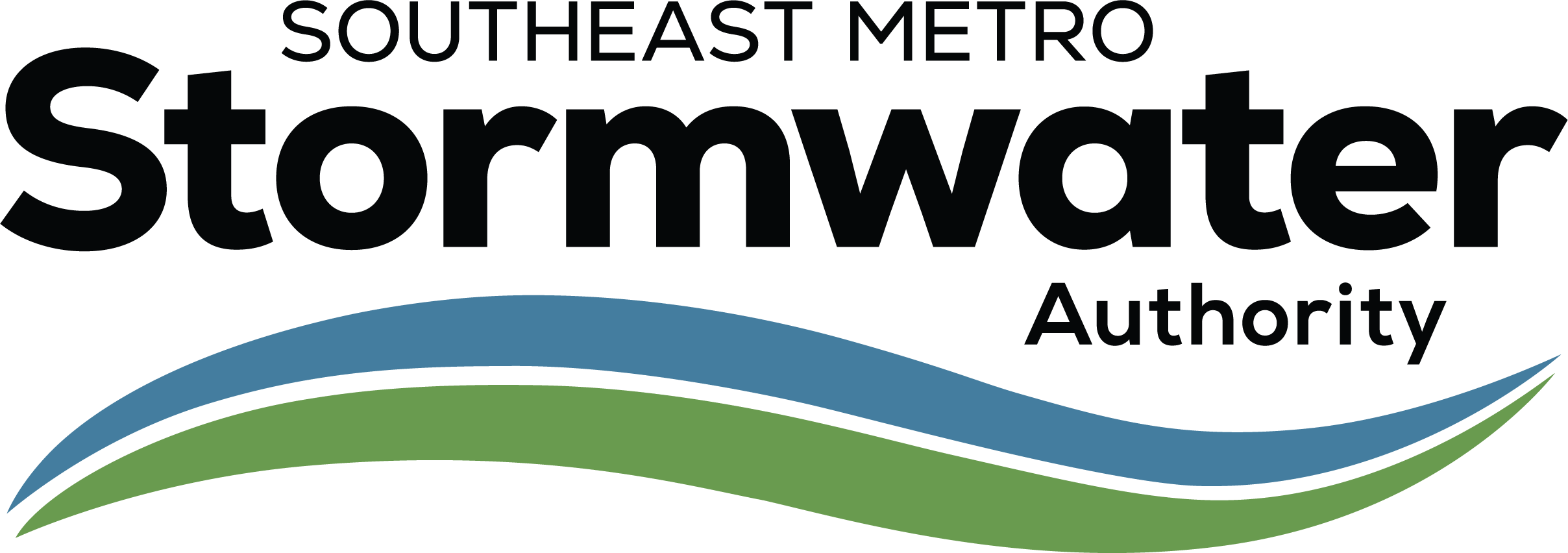Floodplain Rules and Regulations
Building Responsibly in our Community
Floodplain Regulations apply to developments in the SEMSWA service area (Within the City of Centennial and unincorporated Arapahoe County) that are:
- In the floodplain or floodway
- Adjacent to the floodplain
How to tell if a building or property is in or adjacent to a floodplain?
Check mapping sources directly.
- Request a floodplain map for a property within Centennial or unincorporated Arapahoe County from SEMSWA. Visit our Contact Us page to submit a request.
If your property is in a floodplain, certain uses are allowed and others are prohibited. If a use is not listed, reach out to SEMSWA to inquire about the use.
Activities that are allowed in the floodplain with the proper permits
The City of Centennial and Arapahoe County have determined that the following uses and improvements may be considered within the floodplain if it is determined that the proposed use or improvement is in conformance with the floodplain management regulations and floodplain management goals.
- Agricultural Uses.
- Recreation Uses.
- Public Facilities.
- Landscaping.
- Uses Not Listed.
- Uses not specifically listed above may be permitted if, in the opinion of the Director (or designee), they are similar in character to permitted uses in this district, and are in conformance with the intent of this district. Uses not specifically prohibited in this section should not be construed as allowed by exclusion.
For more information and definitions please see the appropriate Land Development code.
Activities that are NEVER allowed in the Floodplain
Use Factors: In general, any use that has potential for the following to occur is prohibited in the floodplain:
- Obstruction (e.g.. Fill) of the flood water flow so that the floodplain is altered in elevation and extent in excess of the allowable criteria (unless approved through a floodplain modification study).
- Reduction in the carrying capacity of the channel (unless approved through a floodplain modification study).
- Storage of materials, equipment, or facilities that could become dislodged or displaced and /or deposited downstream causing culvert or bridge blockage, channel degradation, or damages to other properties.
- Activities that negatively impact water quality.
For more information and definitions please see the appropriate Land Development code.
ALL activities in the floodplain, regardless of impact, need to be permitted. Even when it is apparent that there are no adverse impacts to the floodplain, a permit is required. Common floodplain activities that must be permitted:
- Floodplain modifications – including any filling, grading, channel improvements, or channel work of any kind
- Stabilization improvements – drop structures, rip rap, bank protection
- Installation or maintenance of bridges, culverts, other conveyances
- Any improvements to structures within the floodplain
- Landscaping – including grading, clearing, re-vegetation, tree planting, retaining walls, bridges, stairs, etc.
- Trenching operations associated with utility construction or maintenance
- Installation and maintenance of storm sewer outfall structures
- Fencing, when approved
- Trail construction or rehabilitation
- Construction and maintenance of master planned on-line detention or water quality facilities
- Installation and maintenance of park and recreation facilities
At any time, you can contact SEMSWA staff for direction concerning your proposed improvements by using the Contact Us form.
- A Floodplain Development Permit is required for any development proposed in the Floodplain. All activities, regardless of impact, need to be permitted. If you have determined the use is allowed, call SEMSWA to apply for a Floodplain Development Permit (FPDP). For more information on Floodplain Development Permits, see Section 5.6 of SEMSWA Stormwater Management Manual and Section 5.6 of the Arapahoe County Stormwater Management Manual.
- Building permits are required for any structure improvements or additions.
- A Grading, Erosion, and Sediment Control permit is required for any grading activities within the floodplain.
- A Fence Permit may be required for fence construction.
- See permits and templates
I have homeowners insurance, do I need flood insurance too?
Homeowners insurance does not cover damages from flood waters.
Can I purchase flood insurance?
Anyone in a community that participates in the National Flood Insurance Program (NFIP) can purchase building and/or contents coverage, with a few exceptions. Buildings principally below ground or entirely over water are not eligible for NFIP flood insurance. Both the City of Centennial and unincorporated Arapahoe County participate in the NFIP. There is a 30-day waiting period from when you sign up for flood insurance to when coverage starts.
When is flood insurance mandatory?
Flood insurance is required when a building or home in a FEMA SFHA has a federally backed mortgage. Other mortgages may also require flood insurance for properties in a floodplain. It is often a prerequisite for receiving federal disaster aid and recovery assistance.
Why should I purchase flood insurance if it’s not mandatory for me?
It is not just high-risk areas that are flooded. On average, 25-30 percent of all flood insurance claims come from moderate or low-risk flood areas. Relying on Federal disaster assistance is not the answer. Federal disaster assistance is only available if the President declares a state of disaster. Even then, disaster assistance is often a loan that must be repaid with interest, in addition to mortgages, other loans, and credit card debts. Flood insurance pays even if a disaster is not declared.
See FEMA map changes process section here, permitting and templates here, or reach out to SEMSWA on the Contact Us page and floodplain staff can walk through the options.
For more information and definitions please see the appropriate Land Development code.
- City Land Development Code - Chapter 12 Article 7, section 12-7-202
- County Land Development Code - Chapter 2 (2-4.10) and Chapter 4 (4-3.5)
